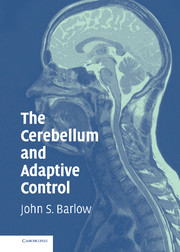Book contents
- Frontmatter
- Contents
- Preface
- Acknowledgments
- PART ONE ANATOMY AND PHYSIOLOGY OF THE CEREBELLAR SYSTEM
- PART TWO CEREBELLAR FUNCTIONS
- PART THREE MODELS AND THEORIES
- 13 Nonadaptive Models, Forerunners of Adaptive Models, and Earlier Adaptive Control Models
- 14 Neural Networks and Adaptive Control: Neural Network Models
- 15 Specific Features of Adaptive Controllers and Adaptive Signal Processors
- 16 Adaptive Control Models
- PART FOUR SUMMARY AND CONCLUSIONS
- APPENDIX A A Hybrid Analogue/Digital Multiplexer/Multiplier-Based Adaptive Signal Processor
- Author's Note
- Bibliography
- Index
14 - Neural Networks and Adaptive Control: Neural Network Models
Published online by Cambridge University Press: 28 October 2009
- Frontmatter
- Contents
- Preface
- Acknowledgments
- PART ONE ANATOMY AND PHYSIOLOGY OF THE CEREBELLAR SYSTEM
- PART TWO CEREBELLAR FUNCTIONS
- PART THREE MODELS AND THEORIES
- 13 Nonadaptive Models, Forerunners of Adaptive Models, and Earlier Adaptive Control Models
- 14 Neural Networks and Adaptive Control: Neural Network Models
- 15 Specific Features of Adaptive Controllers and Adaptive Signal Processors
- 16 Adaptive Control Models
- PART FOUR SUMMARY AND CONCLUSIONS
- APPENDIX A A Hybrid Analogue/Digital Multiplexer/Multiplier-Based Adaptive Signal Processor
- Author's Note
- Bibliography
- Index
Summary
In the survey of models in Chapter 13, several different types of cerebellar models, including some adaptive control and some neural network models, were treated more or less equally. In this chapter, by contrast, emphasis is placed on general features of (the closely interrelated) adaptive control and neural network models, especially concerning the question of plasticity (memory; i.e., changeability of weights), as a model for changes of efficacy of mossy fiber–Purkinje cell dendrite synapses under the influence of the climbing fibers. This chapter paves the way for Chapter 15, in which the features of adaptive controllers (as well as, in principle, neural network models) are illustrated with the aid of a specific implementation. Thus, a look is taken inside the “black box” or schematic diagram. In turn, more advanced and recent adaptive control and neural network models are considered in Chapter 16.
A brief word should be mentioned about terminology and synonyms, a topic that will also arise later. Neural nets, nerve nets, or (artificial) neural networks, are also known as connectionist models (theories) of computation (Rumelhart 1990). Adaptive controllers are also known as adaptive filters, adaptive signal processors, state estimators, and Kalman filters or Kalman–Bucy filters. These terms are used more or less interchangeably in this text. (The term, adaptive controller, has a slightly different meaning from that of adaptive signal processor; the latter implies that there is no specifically controlled object; see also Chapter 16.)
- Type
- Chapter
- Information
- The Cerebellum and Adaptive Control , pp. 204 - 222Publisher: Cambridge University PressPrint publication year: 2002

